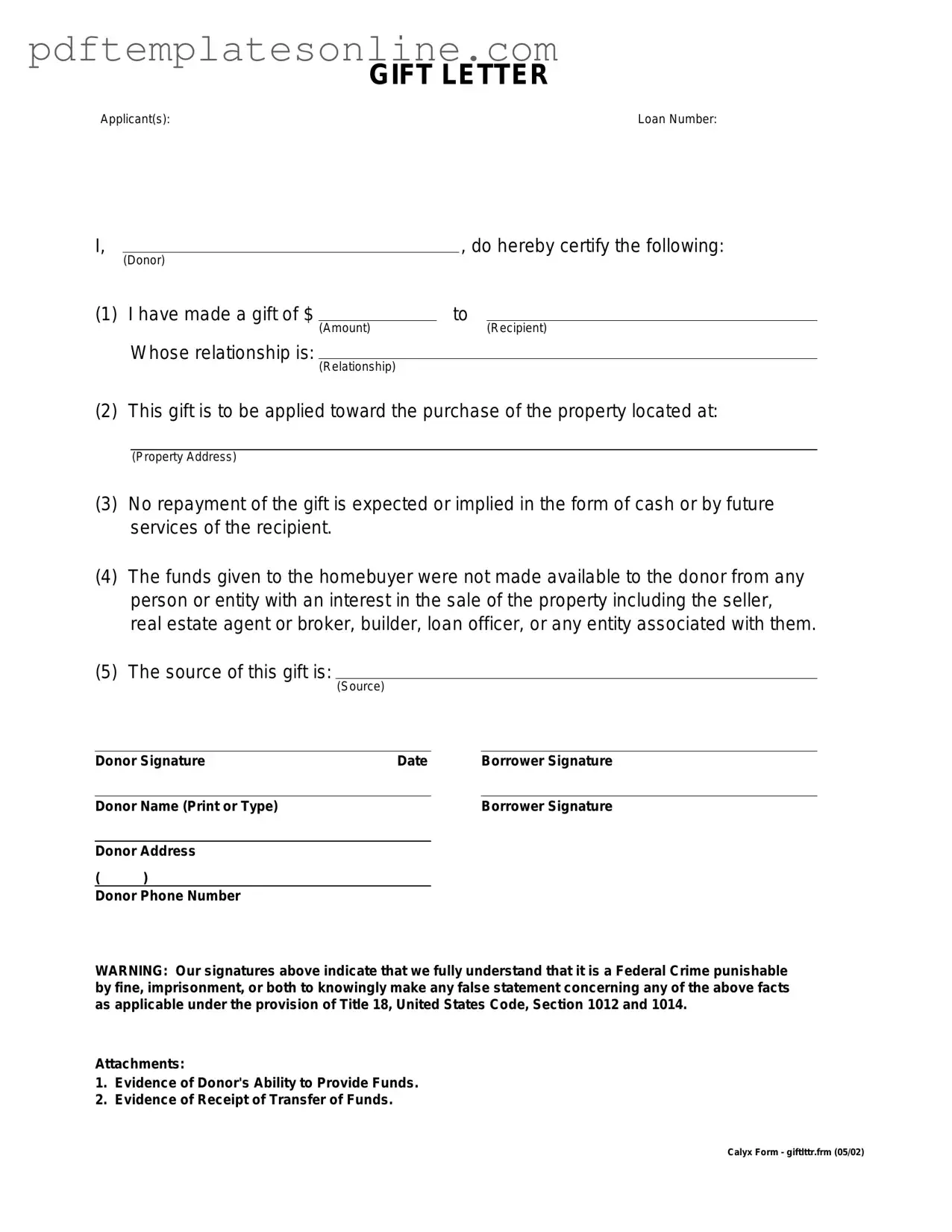When it comes to filling out a Gift Letter form, many individuals make common mistakes that can lead to delays or complications in the process. Understanding these pitfalls can help ensure that the letter meets the necessary requirements and facilitates a smooth transaction.
One frequent error is failing to include the correct names of both the giver and the recipient. It’s essential to ensure that the names match exactly as they appear on official documents. Any discrepancies can raise questions about the legitimacy of the gift.
Another mistake often made is omitting the relationship between the donor and the recipient. Lenders typically want to understand the connection between the two parties to assess whether the gift is genuine or if it may come with expectations of repayment.
Inaccurate dollar amounts can also cause issues. If the amount of the gift is not clearly stated or if it differs from what is documented elsewhere, it can lead to confusion. Always double-check that the figures are accurate and clearly written.
Many people forget to date the Gift Letter. A missing date can create uncertainty about when the gift was given, which is critical for financial records and tax implications. Always include the date to provide a clear timeline.
Another common oversight is not signing the letter. Without a signature, the document lacks authenticity. Both the giver and recipient should sign to confirm their agreement and understanding of the gift.
Some individuals neglect to include a statement indicating that the gift does not need to be repaid. This assurance is vital for lenders, as it clarifies that the funds are a true gift and not a loan, which could complicate the financial assessment.
Lastly, failing to provide sufficient context or details about the gift can hinder the process. Including a brief explanation of the purpose of the gift or any relevant circumstances can enhance clarity and support the legitimacy of the transaction.
